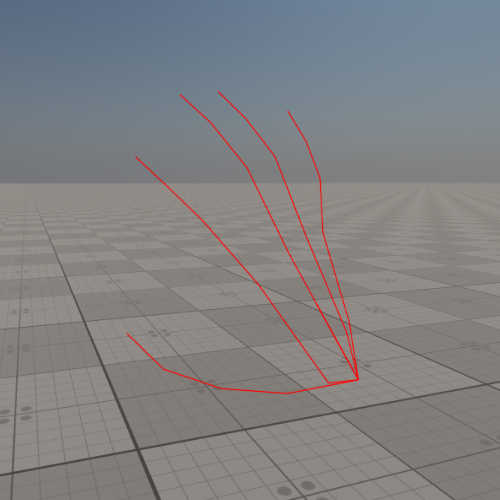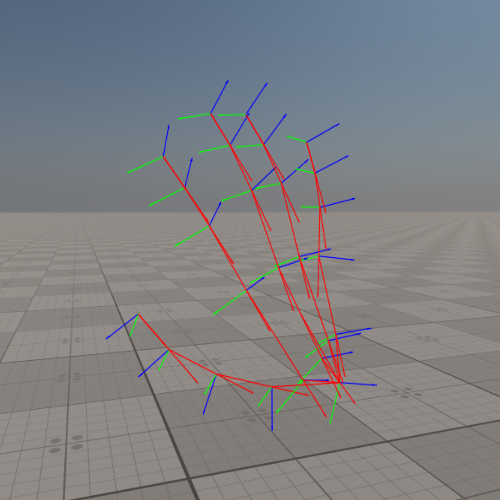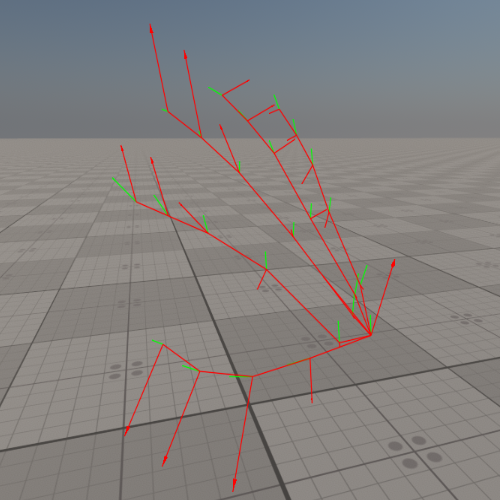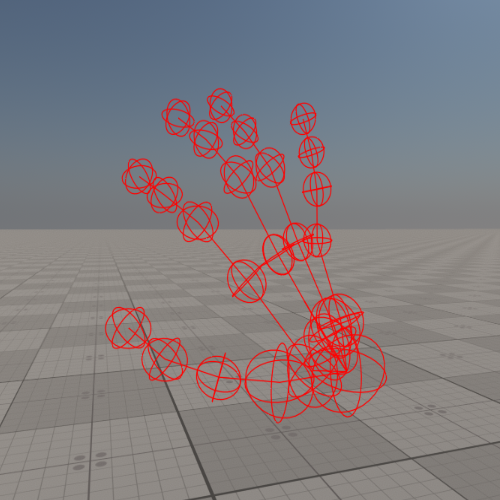Unigine::VRHandTracking Class
| Header: | #include <UnigineVRHandTracking.h> |
This class manages the VR hand tracking feature. It allows visualizing the bones basis, velocity and size to check and configure the hands configuration.
Notice
Hand tracking is natively supported only when using the OpenXR backend. This includes any VR device that supports OpenXR hand tracking (e.g., Meta Quest, Varjo, Vive with appropriate runtimes). For varjo and openvr backends, hand tracking requires additional plugins such as LeapMotion Plugin or Ultraleap Plugin.
Refer to this article to properly configure hand tracking in your project and choose the right backend.
VRHandTracking Class
Members
bool isAvailable() const#
Returns the current value indicating if hand tracking is available on the active VR device and is supported at runtime.
Return value
true if hand tracking is available; otherwise false.Ptr<VRHand> getHandLeft() const#
Returns the current left hand.
Return value
Current left hand.Ptr<VRHand> getHandRight() const#
Returns the current right hand.
Return value
Current right hand.void setVisualizerEnabled ( bool enabled = 0 ) #
Console: vr_hand_tracking_visualizer_enabled
Sets a new
value indicating if the visualizer for hands is enabled. When set to 1, the engine will draw a simple debug skeleton of the hands, showing bones only. This option requires the Visualizer to be enabled.
*.boot .

Arguments
- bool enabled - Set true to enable the visualizer for hands; false - to disable it. The default value is false.
bool isVisualizerEnabled() const#
Console: vr_hand_tracking_visualizer_enabled
Returns the current
value indicating if the visualizer for hands is enabled. When set to 1, the engine will draw a simple debug skeleton of the hands, showing bones only. This option requires the Visualizer to be enabled.
*.boot .

Return value
true if the visualizer for hands is enabled; otherwise false. The default value is false.void setShowBasis ( bool basis = 0 ) #
Console: vr_hand_tracking_show_basis
Sets a new
value indicating if the visualizer for the coordinate axes (basis) of each hand bone is enabled. This option requires the Hand visualizer to be enabled.
*.boot .

Arguments
- bool basis - Set true to enable the visualizer for the basis of each hand bone; false - to disable it. The default value is false.
bool isShowBasis() const#
Console: vr_hand_tracking_show_basis
Returns the current
value indicating if the visualizer for the coordinate axes (basis) of each hand bone is enabled. This option requires the Hand visualizer to be enabled.
*.boot .

Return value
true if the visualizer for the basis of each hand bone is enabled; otherwise false. The default value is false.void setShowVelocity ( bool velocity = 0 ) #
Console: vr_hand_tracking_show_velocity
Sets a new
value indicating if the visualizer for the velocity vectors of each hand bone is enabled. Useful for debugging motion-based interactions like swipes or throws. This option requires the Hand visualizer to be enabled.
*.boot .

Arguments
- bool velocity - Set true to enable the visualizer for the velocity vectors of each hand bone; false - to disable it. The default value is false.
bool isShowVelocity() const#
Console: vr_hand_tracking_show_velocity
Returns the current
value indicating if the visualizer for the velocity vectors of each hand bone is enabled. Useful for debugging motion-based interactions like swipes or throws. This option requires the Hand visualizer to be enabled.
*.boot .

Return value
true if the visualizer for the velocity vectors of each hand bone is enabled; otherwise false. The default value is false.void setShowBoneSizes ( bool sizes = 0 ) #
Console: vr_hand_tracking_show_bone_sizes
Sets a new
value indicating if the visualizer for the size of each hand bone is enabled. Displays red spheres representing the size (radius) of each bone, providing a visual reference for the physical dimensions of the tracked hand. This option requires the Hand visualizer to be enabled.
*.boot .

Arguments
- bool sizes - Set true to enable the visualizer for the size of each hand bone; false - to disable it. The default value is false.
bool isShowBoneSizes() const#
Console: vr_hand_tracking_show_bone_sizes
Returns the current
value indicating if the visualizer for the size of each hand bone is enabled. Displays red spheres representing the size (radius) of each bone, providing a visual reference for the physical dimensions of the tracked hand. This option requires the Hand visualizer to be enabled.
*.boot .

Return value
true if the visualizer for the size of each hand bone is enabled; otherwise false. The default value is false.The information on this page is valid for UNIGINE 2.20 SDK.
Last update:
2025-06-20
Help improve this article
Was this article helpful?
(or select a word/phrase and press Ctrl+Enter)